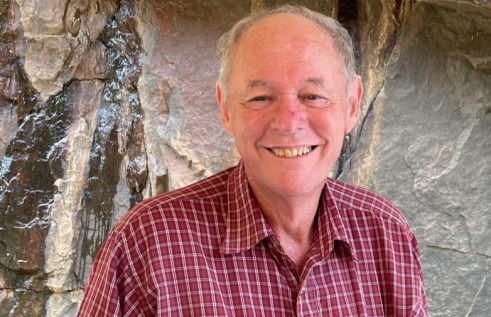RIEL seminar series
HDR Reports
| Presenter | Billee McGinley and Natalie Robson | |
|---|---|---|
| Date |
|
|
| Time |
to
|
|
| Contact person | E: RIEL.outreach@cdu.edu.au | |
| Location | Casuarina campus Yellow 1, Level 1, Room 39 and online | |
| Open to | Public | |
Spatial analysis for planning ecological sustainable development of utility-scale solar and wind energy in the Northern Territory, presented by Billee McGinley
Conservation of biodiversity, climate mitigation and renewable energy targets and goals converge in current policy plans in 2030. While a transition to renewable energy is a key solution to mitigate climate change, large areas of land will be required and conflicts with conservation are arising.
The Northern Territory (NT), with widespread solar resources experiencing an influx of utility-scale solar developments, regional landscapes have been identified where it is intended that solar and wind energy systems could power production of green hydrogen for global export. Planning for sustainable regional development of onshore utility-scale solar and wind farms benefits from an independent decision-making framework to minimise negative impacts to biodiversity and to avoid land use conflicts.
The research being undertaken is using Geographic Information Systems to build a spatially enabled multi-criteria evaluation (MCE) framework to plan for sustainable regional development of onshore utility-scale solar and wind energy projects in the NT. This presentation will unveil spatial data that will be incorporated into the MCE model. Spatial analysis of regional ecosystem that could be impacted, within a bioregional framework, will also be reviewed to evaluate confidence in regional planning for positive sustainability outcomes.
Planning for sustainable regional development of renewable energy can both propel a rapid transition to renewable energy and promote ethical investment, with the backing of the community.
Billee McGinley is a geo-spatial scientist with a diversity and depth of experience in natural resource management and the use of Geographic Information Systems. Residing on Kulumbirigin Country (Darwin, NT) since 2001, Billee has worked widely across the Top End of the NT, including many years working for Indigenous land and sea managers.
Habitat Use and Genetics of Foraging Green Turtles (Chelonia mydas) in the Top End, presented by Natalie Robson
Green turtles (Chelonia mydas) are listed as “vulnerable” and “migratory” under the Commonwealth’s Environment Protection and Biodiversity Conservation (EPBC) Act 1999 and “Endangered” by the International Union for Conservation of Nature's Red List of Threatened Species.
However, their population status in the NT is currently unknown. Green turtles are an important food resource for Indigenous Australians and a species of cultural importance across many areas of the Top End. Marine turtles in the NT are at risk from marine debris, climate change, chemical and terrestrial discharge, international take (turtles taken outside Australian waters), and Indigenous take.
Natalie Robson's PhD aims to sample green turtles resident to foraging areas in the Top End, to identify their natal origins, migratory corridors and their breeding and foraging areas in order to inform on-ground management plans.
This presentation is an overview of Natalie's PhD aims, methods, and a brief summary of the results collected so far.
Related Events

Boring beetles and super models: mapping the distribution of a new invader
The polyphagous shot-hole borer (PSHB) is a tiny beetle with a mouthful of a name, but it’s been making headlines as a new invasive species in Australia. PSHB was first detected in Perth three years ago and has since devastated trees across the city. There are concerns about what its further spread could mean for urban, agricultural and natural environments.
Read more about Boring beetles and super models: mapping the distribution of a new invader
Groundwater: Hidden wonder of the Northern Territory
The seminar ‘Groundwater: Hidden wonder of the Northern Territory’ will be presented in two parts. First, Steven will provide a basic explanation of what groundwater is and concepts of how groundwater systems operate. He will then give an NT-wide view of groundwater properties and processes.
Read more about Groundwater: Hidden wonder of the Northern Territory
Carbon and water adventures in north Australia
With climate change and increasing land use pressures there is more and more demand for knowledge of carbon dynamics and water use as well as water resource management. Lindsay’s research is focused on providing better understanding of the biophysical environment of tropical land and water systems.
Read more about Carbon and water adventures in north Australia

